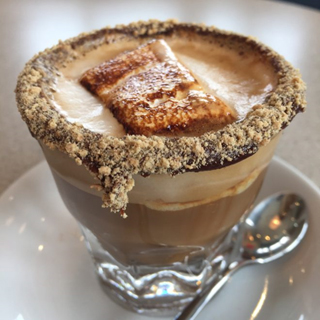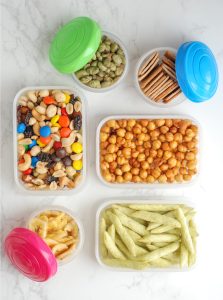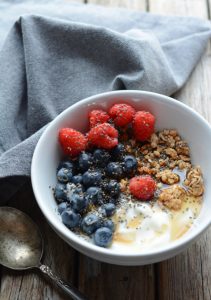Chapter 5: Writing for the Web
Quality Content Ingredients
A captivating voice baits the hook, but a blog won’t land a strong and returning readership if the content and mechanics behind the voice are subpar.
What are some examples of strong versus subpar content?
Originality
Organization and Relevance
Links
Visual Appeal
Proper Mechanics
Formatting Fit for a Scan
Timely and Current Connections
Blogging requires planning, because new posts should appear regularly. An established blogger, Dekker posts two to three times a week. He uses Google calendar to keep content planned two to three weeks in advance, and he schedules sponsored posts and paid work often a month or two in advance. Creating a content calendar helps ensure a steady flow of content and also encourages strategic and timely topic choices.
Beyond adding fresh content on a regular basis, the posts themselves should be timely. This might mean tying in to a current event or trending topic: in Dekker’s case, visiting a newly opened restaurant or offering “5 Restaurants to Try This Month.” With a more timeless or evergreen topic, content can link to current other resources or websites.

Originality
Whatever the blog topic – food, fashion, sports, cars, vintage Barbie dolls – be original in the thoughts shared and the voice and writing style used to share them. Dekker speaks in his own voice about his experiences, keeping content casual and in the first person. He seeks out new and interesting restaurants and experiences and talks about them with his own personal spin.
Unique and fun visuals also add interest. Photos, other graphics and multimedia elements can bring the content to life and capture the attention of readers scanning the page. In a post about Kittie’s Café in Bexley, Dekker highlights key options at the WiFi and laptop-free café, including the s’moretado drink, one of the standout menu items to not only hear about but see.
Organization and Relevance
Good posts have a strong and relevant takeaway for readers. Whether it’s helpful cooking tips or funny anecdotes meant to entertain, writers should know what they intend for the reader to gain from reading each post.
Keep an eye on word count and structure the content. It’s not a meandering diary entry. Post length depends on the style of the writer, the blog and the post topic. Longer posts tend to do better in search results, so posts often run 2,000+ words. Creating a rough outline before writing can help writers organize key messages and place links and images.
Links
A blog post that starts a conversation and links to other great content mean readers never hit a dead-end. Links give readers a choose-your-own-adventure experience that lets them explore examples, dig deeper into the post’s main points or check out other perspectives. Use links to connect your blog content to other expertise, unique perspectives, resources or examples.
Links also force readers to choose between continuing on with the post or clicking, so limit links to key outside sources and clearly show readers where links will take them. Avoid “click here” and make key words the active link. This helps search engines find your post for key information and it clearly indicates to readers where the link leads.
Visual Appeal
Images tell great stories and most blog posts fall flat without some type of photos, graphics or video. Dekker recommends using original artwork as much as possible, “especially considering the fact that we all carry small cameras with us.”

Registered dietician Sally Kuzemchak runs the blog Real Mom Nutrition. She says photos help break up the text of your post and tell a story. She adds that a great image can also get posts noticed on Pinterest and Instagram, which can quickly draw traffic and build audiences.
Assume all existing images are copyrighted unless you prove otherwise. Ask permission to use any existing images or infographics (via email to create a paper trail). Then link back to the original image and include photo credit within the post. It is NOT enough to cite and image and link back to the original source if you don’t have explicit permission from the owner.

You can also take/create your own images. Kuzemchak uses a DSLR camera with a 50mm lens for more of her food photography, but notes that many smartphone cameras take impressive shots as well. She suggests using natural light whenever possible.
“Find a good window with good light and diffuse that light with a white sheer curtain. Experiment using different angles, different settings on the camera, and be patient with yourself as you learn,” she advises. She also encourages bloggers to learn the basics of Adobe Lightroom or another photo editing tool.
Kuzemchak takes all of her own photos, but you can also use royalty-free images on sites such as Canva, Unsplash and Pexels. Some of these “stock” images come with a fee, but many images are free. Keep in mind that they are publicly available and may appear on other sites, so original photos are ideal.
Proper Mechanics
Blogs position their writers as subject-matter experts. And it’s hard to build trust as an expert with spelling and grammatical mistakes, inconsistencies or other weak writing. Dekker says he uses the lessons he learned from journalism, skills like careful proofreading and fact checking.
Other fundamental to keep in mind:
- Using active verbs
- Crafting strong headlines
- Proofreading carefully for both grammar and spelling
- Relying on a stylebook for consistency
- Learning about and using keywords to help readers find your post
- Editing. Editing Again. And Again.
Formatting Fit for a Scan
Remember the importance of formatting online content for readers who are scanning rather than reading word-for-word.
